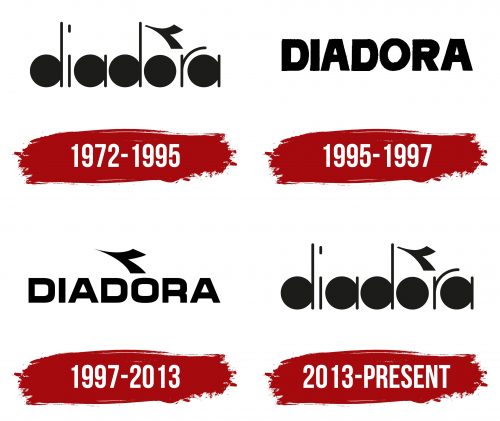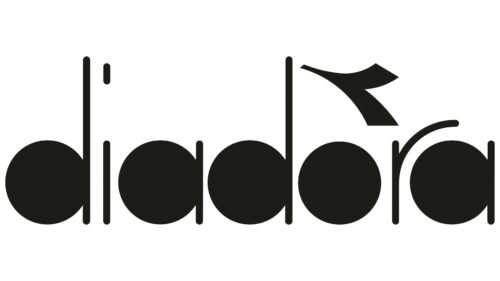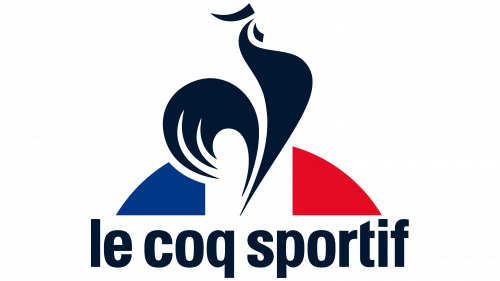The Diadora logo emphasizes the brand’s global reach and commitment to athletic achievements. The emblem embodies the company’s drive for its customers’ success, whether football or tennis balls, and promises high performance. Additionally, the visual mark highlights the creativity and uniqueness of the clothing design, offering an unconventional approach to sports fashion. This symbol represents the brand and conveys its philosophy, combining sports innovation and a dedication to style, making Diadora products popular among sports enthusiasts worldwide.
Diadora: Brand overview
The history of Diadora began in 1948 in the small village of Caerano di San Marco, located in Italy’s Treviso region. The company was founded by Marcello Danieli, who initially focused on manufacturing mountain boots. The name, derived from the Greek term “dia-dora,” meaning “to share honors and gifts,” was chosen carefully.
At the outset, the company concentrated on producing high-quality footwear for skiers and climbers. As a passionate mountain enthusiast, Danieli personally tested each model, which helped the brand earn a reputation for making reliable and comfortable footwear for challenging conditions.
In the 1950s, the business began to expand its product line, introducing shoes for tennis and other sports. This move allowed the company to attract a wider customer base and establish a foothold in the sports footwear market. The decision to produce football boots in the 1960s proved highly successful. Professional players quickly adopted these football boots, and the company formed close relationships with Italian football teams, further enhancing its reputation in the athletic footwear industry.
The 1970s marked a peak for the business. The company opened offices in several European countries, significantly expanding its global reach. Around this time, it also began sponsoring prominent athletes, greatly increasing brand visibility.
Its 1978 partnership with legendary tennis player Bjorn Borg was a major milestone in the company’s history. Borg’s choice to wear its shoes during matches helped boost the brand’s worldwide recognition among tennis fans.
In the 1980s, the company continued its international expansion and broadened its product line to include accessories and apparel. The business further solidified its place in the sports world by becoming the official supplier of the Italian national athletics team.
The 1990s saw continued growth and innovation for the brand. The company invested heavily in developing new technologies for its footwear, including the Net Breathing System, which enhanced comfort and ventilation for wearers.
In 1998, the business celebrated its 50th anniversary by releasing a special collection that honored its achievements in the sports industry.
In the early 2000s, the company transformed. After being acquired by the Italian holding company LIR in 2007, the brand underwent a restructuring and rebranding. The new management aimed to restore its status as a premium athletic apparel and footwear producer. 2009, the company launched the Heritage series, inspired by iconic models from the 1970s and 1980s. The retro-themed line gained popularity among fashion enthusiasts and helped reignite interest in the brand.
The 2010s were a period of innovation and revitalization. The company continued to push the boundaries of technology, introducing several innovations to enhance the performance and comfort of its sports shoes. It also made efforts to strengthen its position in the fashion industry, releasing limited edition collections and collaborating with well-known designers.
In 2015, to mark its 70th anniversary, the business released a special collection based on its most popular models from the past. Both long-time fans and new customers received the collection well.
By 2020, the company had established itself as a leading name in professional sports equipment and fashionable athletic wear. It continued collaborating with top athletes and teams while expanding its presence in the fashion world.
Until 2023, the business continued to evolve, blending modern fashion trends with its athletic heritage. The company expanded its online presence and adapted to changing consumer preferences and shopping habits.
From its founding in 1948 to 2023, the company grew from a small manufacturer of mountain boots into a globally recognized name in sportswear and footwear. Despite changes in ownership and strategy, the business has maintained its commitment to quality and innovation, remaining a key player in the sports equipment and fashion markets.
Meaning and History
What is Diadora?
This Italian company specializing in sportswear and footwear has carved out a unique niche in the sports fashion sector. Known for combining Italian design with cutting-edge technology, it creates gear for sports such as cycling, running, tennis, and soccer. The company has a long history of craftsmanship, with many of its high-quality products still being made in Italy. Athletes and fashion enthusiasts appreciate its designs, which often incorporate retro elements and vibrant colors. The brand is well-known for its tennis and soccer shoes, which many elite athletes choose.
1972 – 1995
The manufacturer’s logo is unusual and original, appearing 20 years after the brand’s founding. The rounded elements of each letter are designed as solid black discs, evoking associations with balls or sports shot puts. This design element hints at one of the company’s key areas — the production and commercialization of soccer balls. The brand has actively promoted, advertised, and sold them since the 1970s, which likely inspired the creation of this emblem.
Diadora produces tennis balls in addition to soccer balls, and this business direction is reflected in the logo. The other elements of the letters are designed as thin lines of varying heights, reminiscent of bars, rods, or the nets of soccer goals and tennis tables. The balls seem to have hit the target and remain still, symbolizing accuracy and success.
The name Diadora possibly comes from the Italian expression “de Iadera,” which is associated with the ancient name of a city in Dalmatia. The schematic depiction of an airplane taking off above the letter “O ” provides additional dynamism. This element emphasizes the brand’s global ambitions and international sales, adding a sense of movement and progress.
1995 – 1997
The authentic and original lettering in the logo was replaced by simple, bold black letters that appeared in the mid-90s when the brand began to focus on selling athletic footwear. During this period, celebrities promoting the products started releasing their lines of boots under the Diadora name. The thick and sturdy letters symbolize the popularity and reliability of the products, emphasizing their durability and quality.
The slight asymmetry of the characters gives the logo a sense of movement, directly linked to the footwear’s purpose — to provide comfort during constant activity and withstand increased demands. The font hints at Diadora’s original and functional shoe design, which remains a key brand feature.
1997 – 2013
In the new logo, the brand aimed to combine the original elements of its heritage with a modern, confident design. The letters became thinner while retaining uppercase to emphasize the company’s achievements and prestige. The narrow glyphs evoke associations with the lightness and agility of products focused on sports apparel and footwear.
The return of the airplane symbol represents the brand’s desire for further development and expansion of its presence in the global market. This decision highlights the brand’s ambition — to make high-quality products accessible to people worldwide, regardless of their location.
2013 – today
After joining Geox, the Diadora brand returned to its roots, enhancing its focus on uniqueness and the search for its core idea. The logo reflected the desire for modernization while remaining true to the traditions of high craftsmanship and innovative approaches. This change highlights the balance between tradition and innovation, which helps the brand remain competitive in the sports apparel and footwear market.
The Diadora logo looks fresh and original due to its simplicity and interesting details. The rounded, clear letters give it a sense of lightness and dynamism, creating the impression of movement, as if it “spins like wheels.” The font is compact, with an emphasis on rounded shapes.
A distinctive feature is the elongated vertical lines of the letters “d” and “a,” creating a harmonious balance between stability and dynamism. These elements emphasize the brand’s effort to blend reliability and energy, which was relevant when the company gained popularity by offering sports footwear and stylish items for an active lifestyle.
The black color underscores its versatility and strictness. This shade, combined with minimalist shapes, makes the logo sharp and confident, conveying a sense of stability and reliability.
The Diadora emblem reflects a time when sports became a full-fledged lifestyle.








